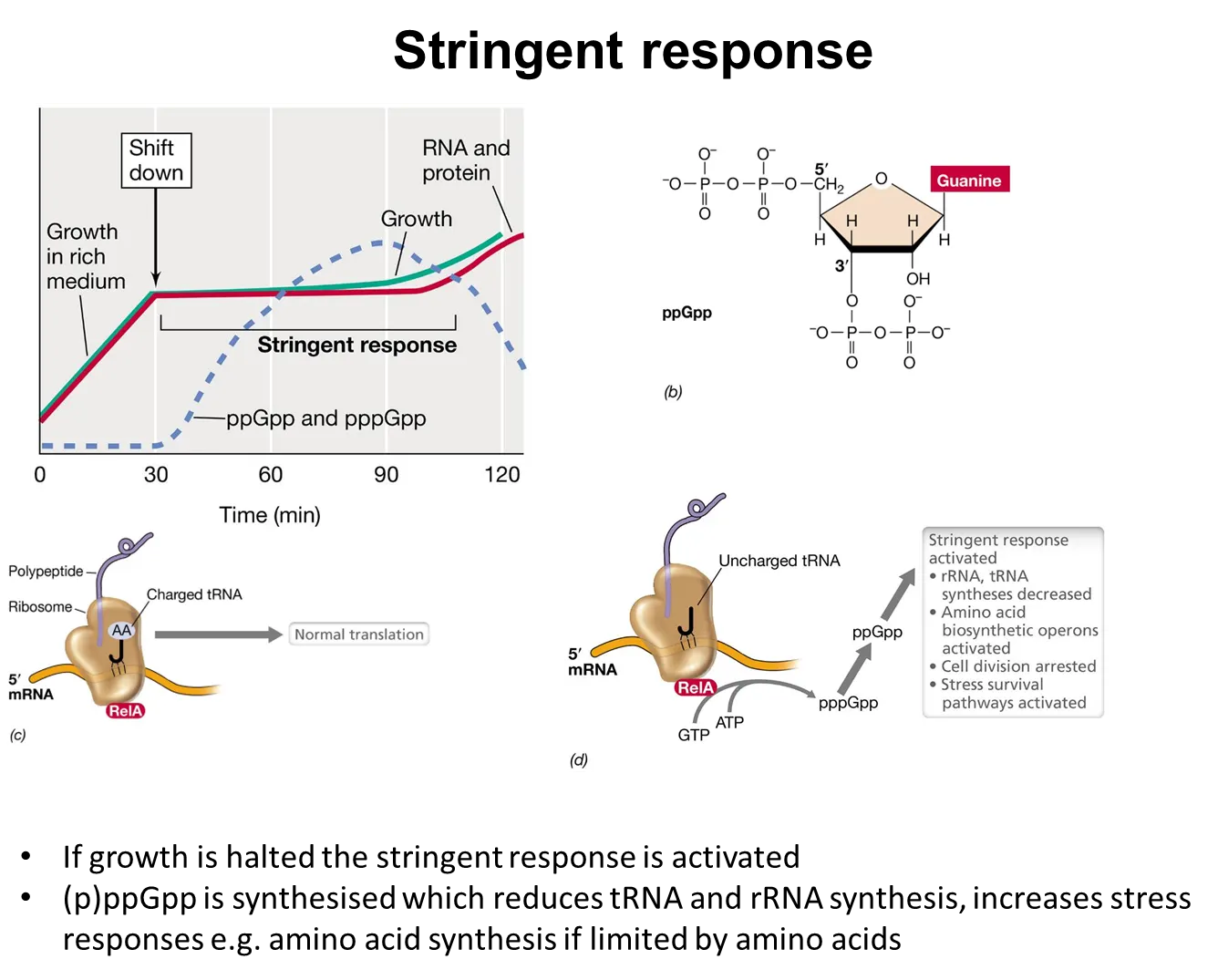6- Control of prokaryotic growth
1/6
There's no tags or description
Looks like no tags are added yet.
Name | Mastery | Learn | Test | Matching | Spaced |
|---|
No study sessions yet.
7 Terms
how can bacteria divide?
by binary fission (symmetrically):
cell elongates then forms a septum in the centre, which leads the cell to separate
this is intercalatory growth- new bits of cell wall are inserted all the way around the cell
by polar growth (asymmetrically):
budding
budding by hyphae
from stalked (specialised) cells producing a motile cell
in polar growth, the new cell wall is all inserted on one side (the purple cell will be all new cell wall, the green cell will be all old cell wall)
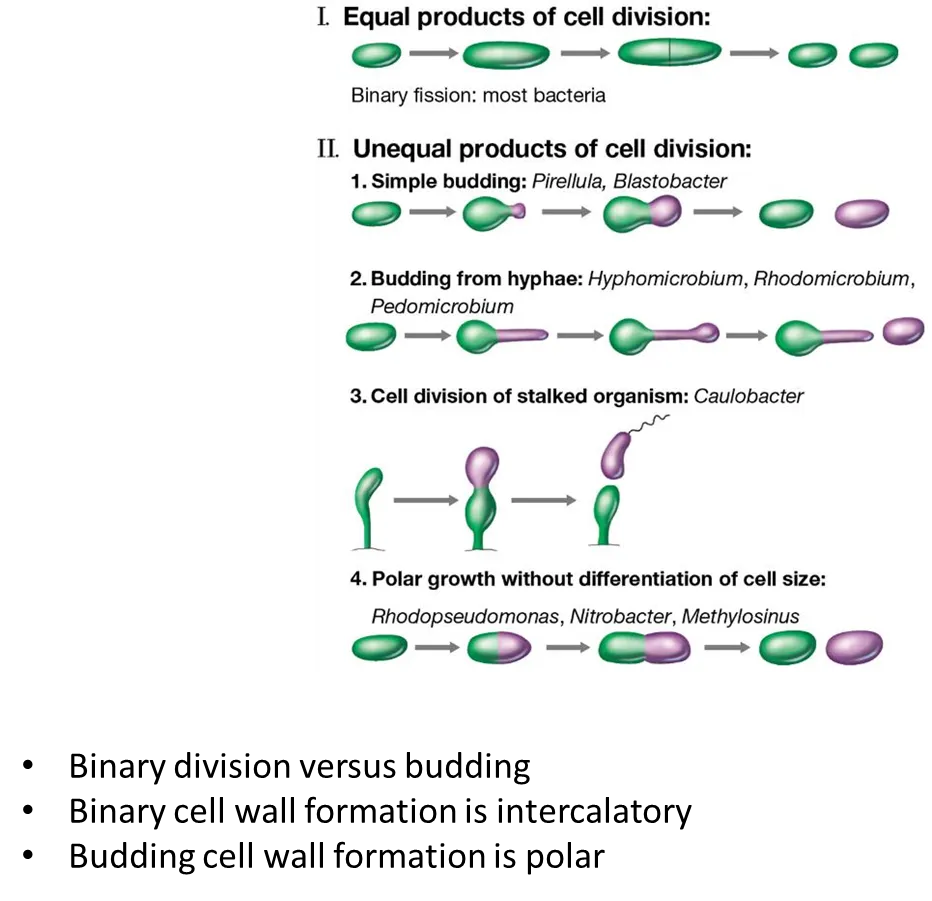
how can the growth of bacteria be measured?
viable cell counts- culturing the sample on a solid medium and counting the colonies produced
turbidity- the optical density (due tolight scattering, not absorption) can be measured by spectrophotometers, which is much faster than culturing
how does bacterial growth vary with the dilution rate in continuous cultures?
in a chemostat (continuous culture) at steady state, the cells grow at the same rate as they are removed from the system, because the cells are competing for a limiting nutrient, so the nutrient added is consumed rapidly
as the dilution rate increases, the cells can grow faster and the doubling rate decreases
they keep pace with the dilution rate until it is so fast that it exceeds the maximal growth rate, where the cells can’t keep up and get washed out
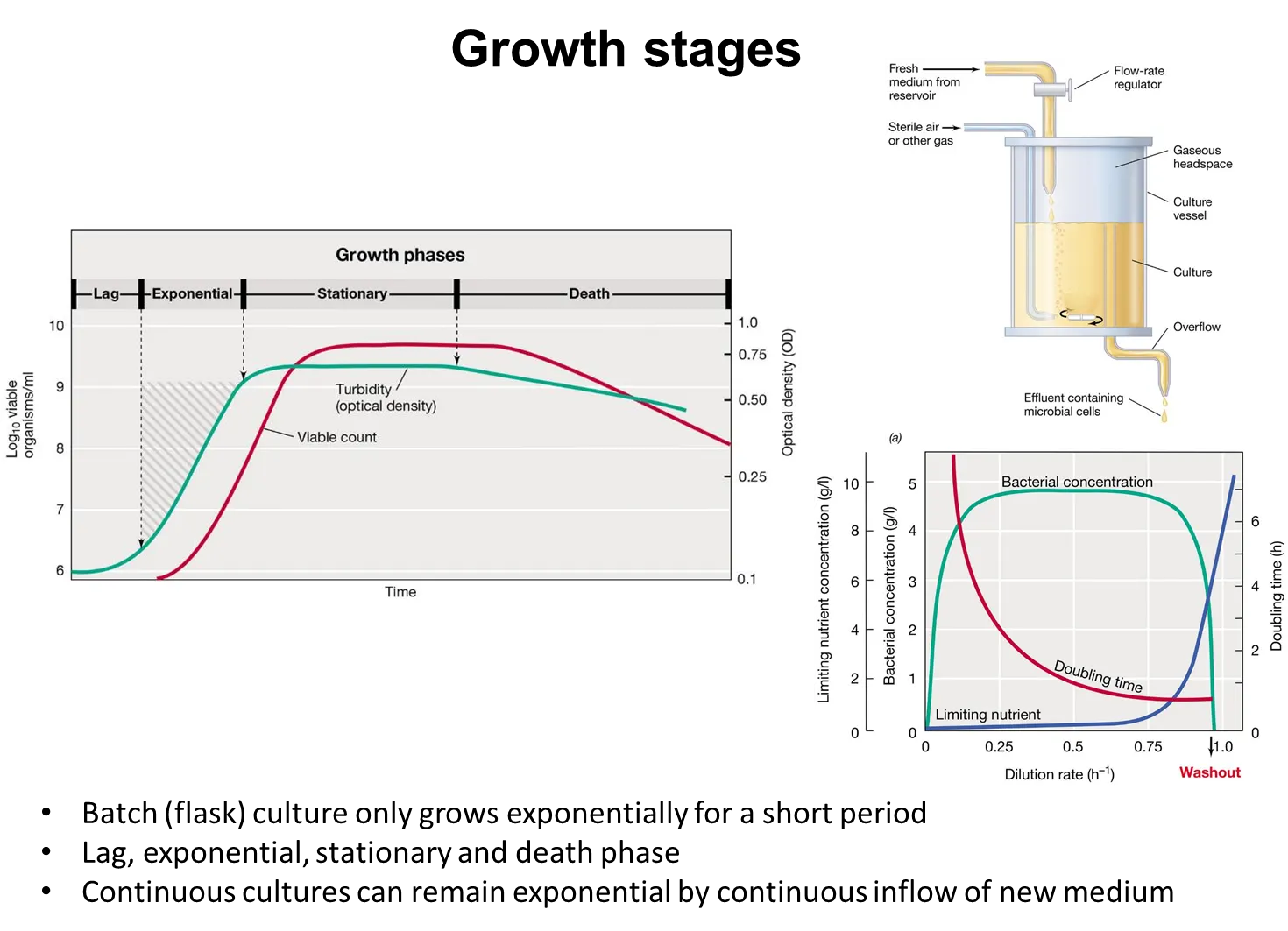
what are compatible solutes and how are they used?
compatible solutes such as sugars, alcohols and amino acid derivatives, increase in concentration in the cell when in high osmolarity environments (low water potential), either by being pumped into the cell or synthesised
these are compatible with the cell’s biochemistry because they don’t mess with cell processes when in high concentrations, like other solutes eg. sodium
this prevents the cell from becoming dehydrated, because water will flow into the cell (positive water balance)

how do different microbes respond to oxygen availability
obligate aerobes need oxygen to survive- they can’t survive in anaerobic conditions
facultative aerobes grow better in oxygen, but can survive in anaerobic conditions
microaerophilic aerobes need oxygen to survive, but at less than atmospheric concentrations
obligate anaerobes need the absence of oxygen- they can’t survive in aerobic conditions
aerotolerant anaerobes don’t need oxygen, and don’t grow any better or worse in aerobic or anaerobic conditions
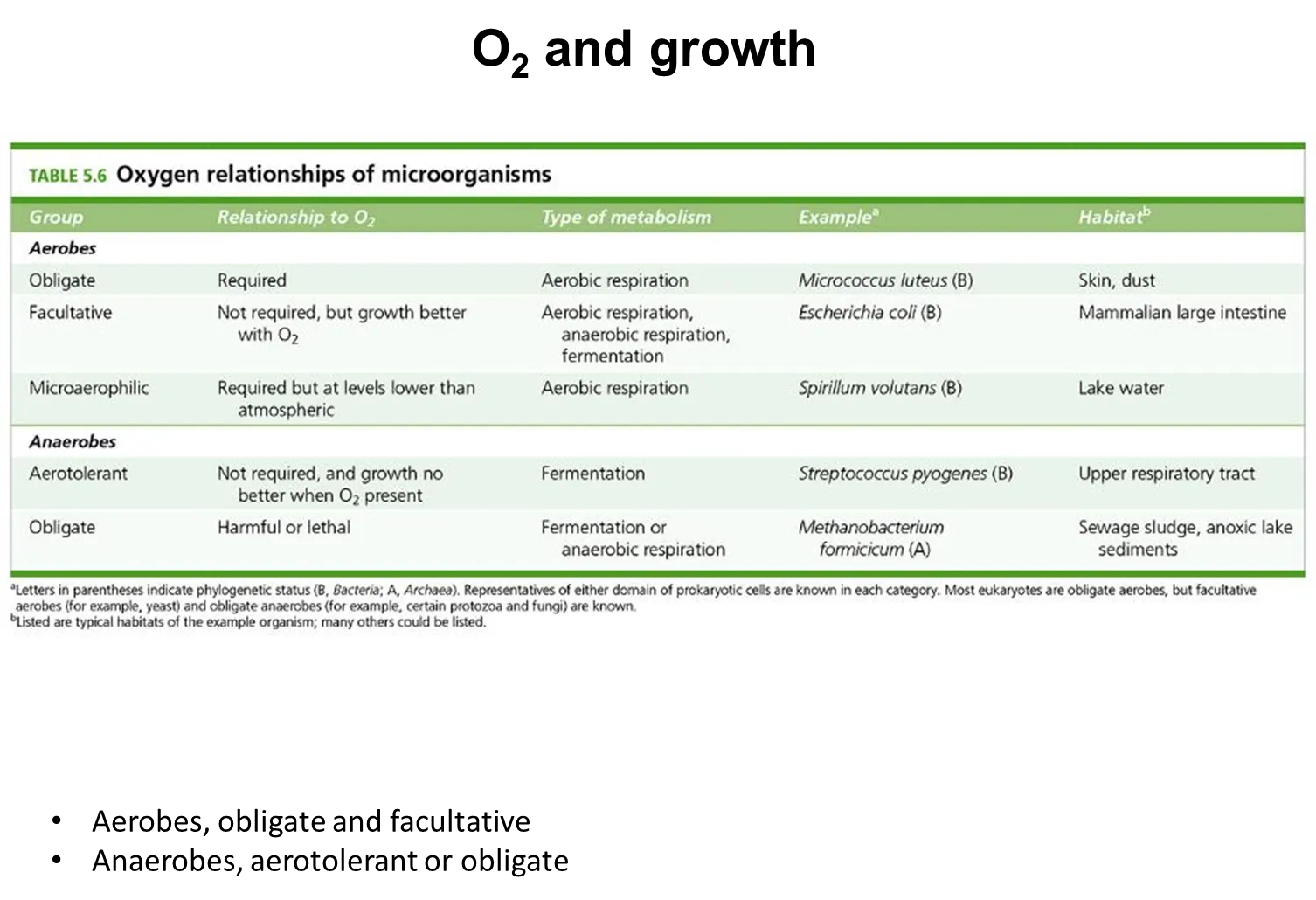
how do bacteria detect cell density and change their behaviour?
bacteria produce signalling molecules, which build up when the cell density is high
they change their behaviour based on these concentrations, by changing gene expression
eg. pathogens don’t produce toxins with low cell density because they won’t make enough difference, but then switch on toxin production in high cell density
G-ve bacteria use acyl homoserine lactones (AHLs) whereas G+ve bacteria use peptides
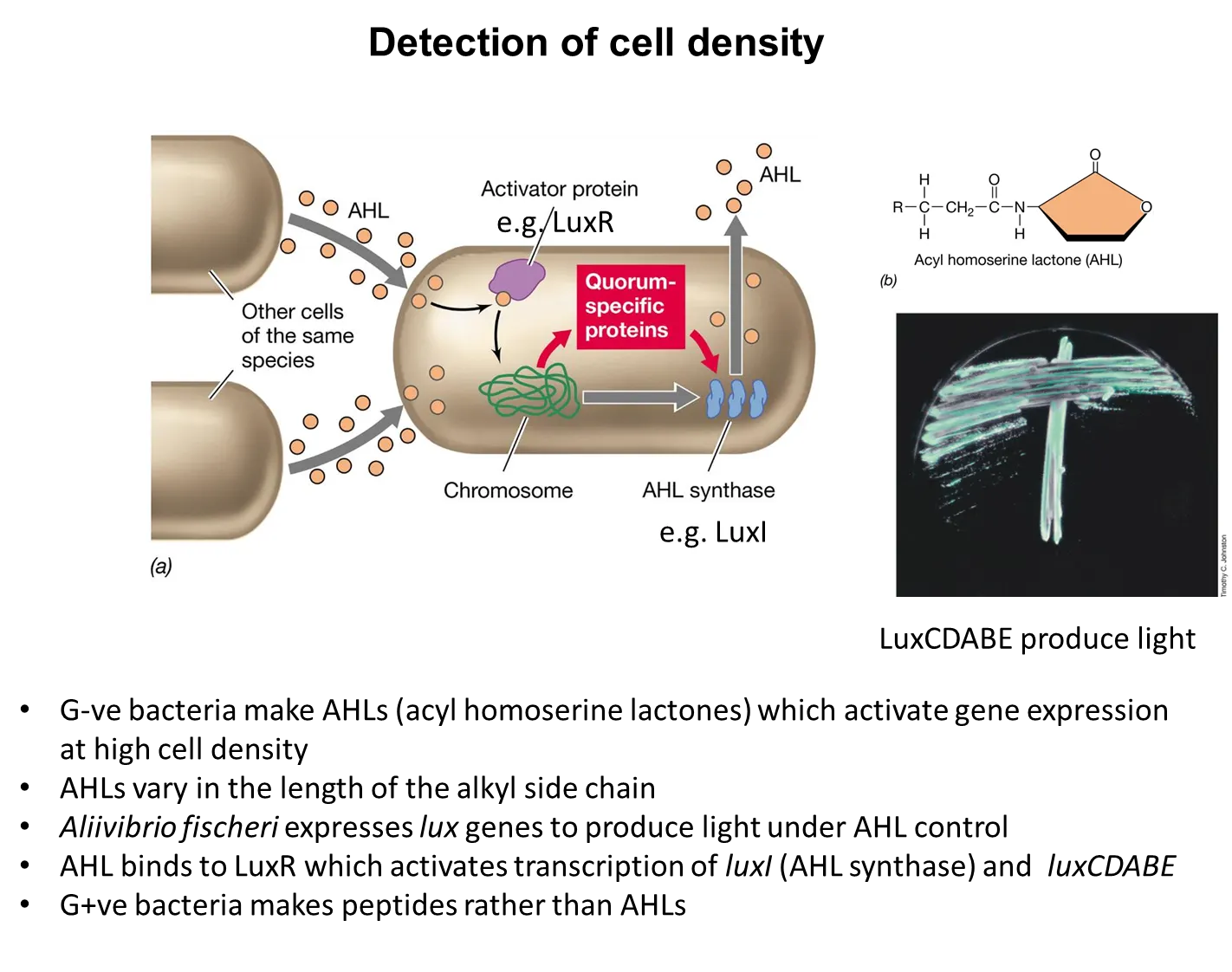
what is the stringent response?
bacteria have to respond to nutrient limitations and stressors
if growth slows, the stringent response is activated
here, charged tRNAs are not used in translation (because there aren’t enough amino acids to charge them)
this causes the relA protein to produce tetraphosphate guanosine, which binds to RNA polymerase and changes its promoter preference
this shifts gene expression to activate stress and survival pathways to adapt to the environment eg. decreasing translation, increasing amino acid biosynthesis, stopping cell division
